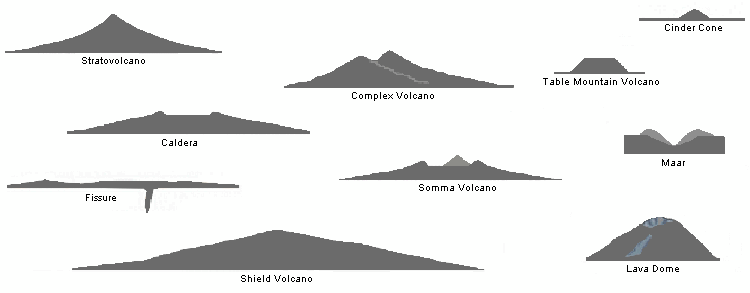The volcanoes themselves can erupt in a wide variety of ways and take on very different shapes. These shapes are closely linked to the place of occurrence, eruption behaviour and type of lava.
A systematic distinction is made between 10 volcano shapes and structures:
Strato volcano: has relatively steep slopes and is built up from alternating layers of loose rock and solid lava flows.
Compound Volcano: (also called Complex volcano) is a volcano type with several cones and craters.
Shield Volcano: shield-shaped volcano with flat slopes that is predominantly formed from layers of lava flows.
Volcanic Fissure: these are actually only cracks in the ground, on the shoulders of which slight bulges of lava flows form.
Caldera: a caldera is a large concavity. The majority of the volcano has fallen into the emptied magma chamber after an eruption. A new volcanic cone can grow in the caldera.
Somma Volcano: these volcanoes are characterised by a double summit, like Vesuvius, in which one summit is the edge of a caldera.
Table Mountain Volcano: table mountains are flat at the top and are produced by eruptions under the ice.
Maar Volcano: maars are volcanic pipes and have a reversed shape. They are typical of the "Vulkaneifel" in Germany.
Lava Dome: a lava dome is an extremely thick lava flow that piles up to form a dome shape. Domes can arise occur individually, or arise in the summit areas of stratovolcanoes.
Cinder Cones: are usually of monogenetic origin. Many parasitic cones are cinder cones.
